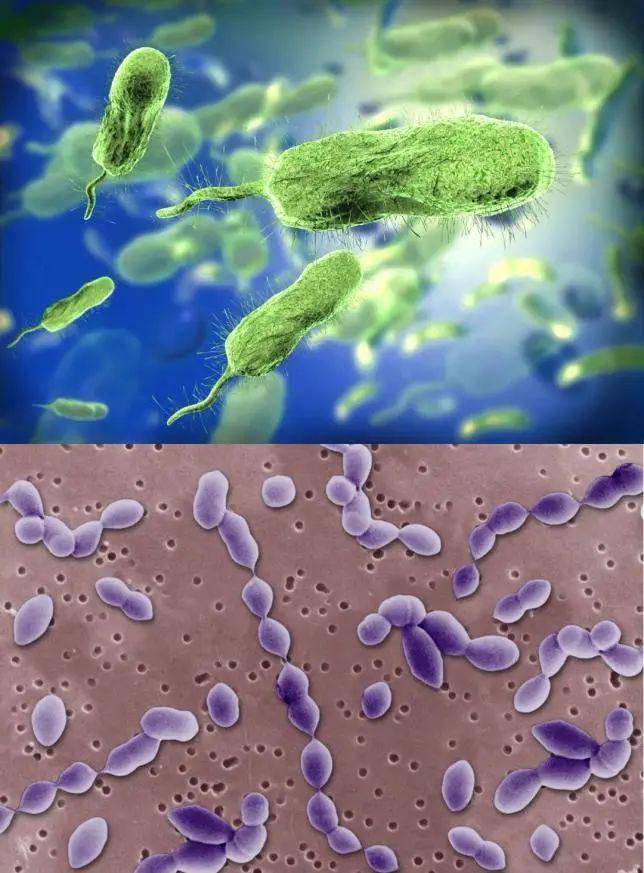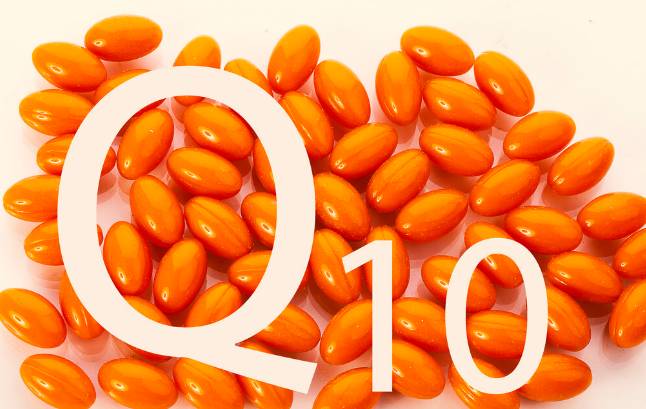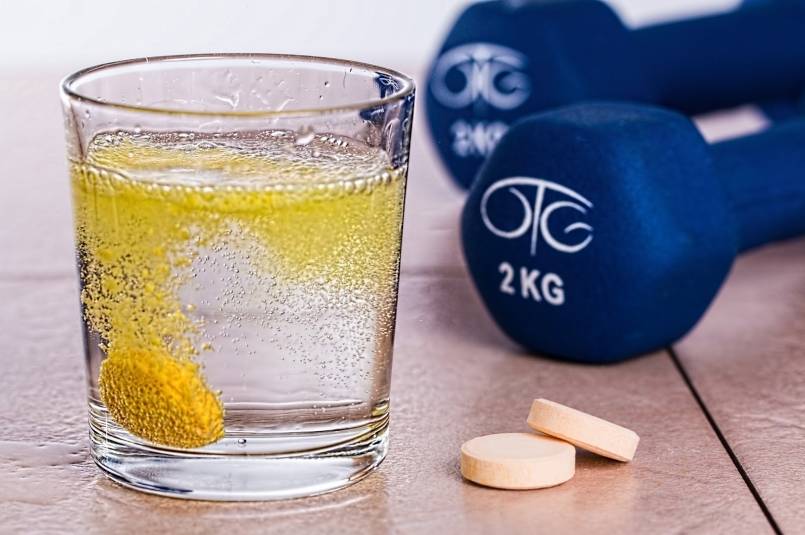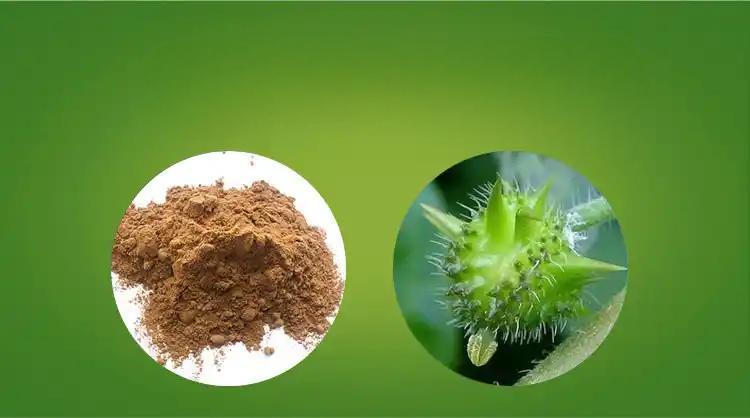What Are the Benefits of Tribulus Terrestris Extract?
Tribulus terrestris, also known as tribulus, white tribulus, tribulus terrestris, zhixing, and pangtong, is an annual herb that grows well in dry, loose, sandy soil. China is abundant in Tribulus terrestris, which is mostly distributed in Shaanxi, Henan, Shandong, Jiangsu, Sichuan and other places[1]. Pharmacological studies have shown that Tribulus terrestris has the functions of relieving liver stagnation, promoting blood circulation and benefiting qi, relieving itching and dispelling wind, clearing the mind and nourishing the eyes, and can be used to treat vertigo, headache, hypochondriac pain, chest tightness, red eyes and itching, and other conditions[2]. Tribulus terrestris flavonoids are an important class of natural active substances in Tribulus terrestris, mostly in the form of glycosides, such as kaempferol, quercetin and isorhamnetin[3]. They have anti-inflammatory, antibacterial, antioxidant, and protective effects on the cardiovascular and nervous systems[4]. This article mainly reviews the extraction methods and pharmacological activities of Tribulus flavonoids, with a view to providing theoretical reference for the comprehensive utilization of Tribulus resources in the fields of food, medicine, fine chemicals and other fields.
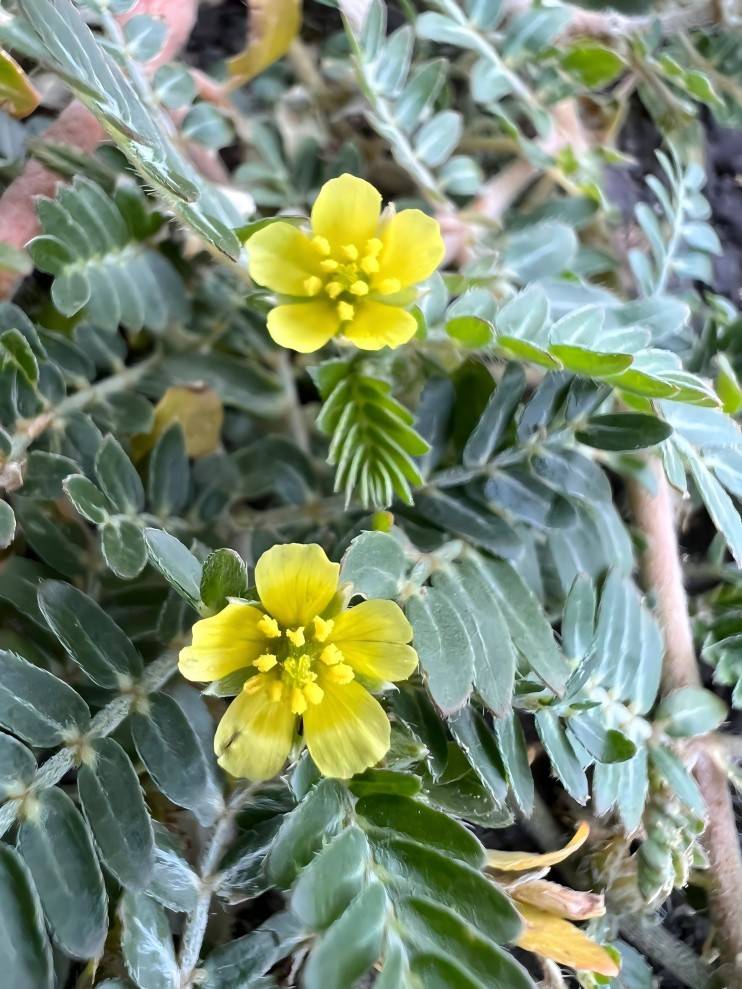
1 Determination of Tribulus flavonoid content
Tribulus flavonoids are mostly crystals, with a few being amorphous powders. The determination methods for tribulus flavonoid content include high performance liquid chromatography (HPLC), high performance liquid chromatography-diode array detector (HPLC-DAD), high performance liquid chromatography-multiple evaluation method and colorimetric method. Shile et al. used reversed-phase high-performance liquid chromatography to determine the content of flavonoids in Tribulus terrestris, including quercetin 1.59 mg/g, kaempferol 0.35 mg/g, isorhamnetin 0. 575 mg/g. Xie Shiquan et al. [6] 1671 used HPLC to determine the flavonoid content of Tribulus terrestris from different origins, up to 15. 59 mg/g. Li Chunna et al. [7] used HPLC-DAD to determine the content of quercetin, kaempferol, and isorhamnetin were 207.9, 264.6, and 614.0 μg/g, respectively. Li Suying et al. [8] used HPLC-QAMS to determine the content of 10 ingredients in Buzheng Bizi pills, including 0.665 mg/g of saiyuanziside, 0.235 mg/g for baicalein 7-O-β-D-glucoside, 0.212 mg/g for baicalein, 0.141 mg/g for baicalin, 0.127 mg/g for baicalin, 0.431 mg/g for naringenin, 0.268 mg/g for hesperidin, 0.061 mg/g for nobiletin, 0.048 mg/g for atractylenolide Ⅲ, hesperidin 0. 268 mg/g, nobiletin 0. 061 mg/g, atractylenoide III 0. 048 mg/g, atractylenoide I 0. 041 mg/g.
2 Extraction method of Tribulus terrestris flavone
2. 1 Reflux extraction
Xiao Tianmei et al. [9] refluxed and extracted the total flavonoids from the whole herb of Tribulus terrestris. The extraction solvent was a 57% ethanol solution, the material-to-liquid ratio was 1:20 (g/mL), the extraction temperature was 72 °C, the extraction time was 3 h, and the total flavonoid content was 4.46%. Shu Guowei et al. [10] used 85% ethanol as the extraction solvent, a material-to-liquid ratio of 1:27.5 (g/mL), an extraction temperature of 85°C, and an extraction time of 2 h, with a total flavonoid yield of 0.785%. Zhao Ming et al. [11] used an orthogonal test to optimize the extraction process of Tribulus terrestris total flavonoids: 70% ethanol, extraction time 1.5 h, extraction temperature 70–75 °C, the liquid-to-material ratio was 1:15 (g/mL), and the total flavonoid content in Tribulus terrestris whole grass could reach 7.15 mg/g.
Li Junling et al. [12] used the yield of extract and the total flavonoid content as evaluation indicators to design an orthogonal test to optimize the extraction process of Tribulus terrestris total flavonoids. The medicinal material was extracted three times with 80% ethanol solution in a 10-fold amount, and the extraction time was 3 h. The total flavonoid content was 1.74 mg/g. Sun Yao-ran et al. [13] designed an orthogonal test to optimize the total flavonoid extraction process of Tribulus terrestris: 70% ethanol solution, liquid ratio 1:25 (g/mL), extraction time 10 h, extraction 4 times, total flavonoid content 1.72 mg/g. The reflux extraction method has the advantages of simple equipment, low cost, and easy operation. In addition, this method has the advantages of less solvent residue and less pollution, and is universal. The disadvantage is that the extraction time is relatively long.
2.2 Ultrasonic-assisted extraction method
Xiao Tianmei et al. [14] studied the ultrasonic-assisted extraction process of Tribulus terrestris total flavonoids: extraction temperature 70 °C, ultrasonic time 40 min, 80% ethanol, liquid ratio 1:20 (g/mL), and the content of Tribulus terrestris total flavonoids was 5. 59 mg/g. Yang Xuemiao et al. [15] optimized the extraction process of Tribulus terrestris total flavonoids by ultrasonic-assisted response surface methodology: the eutectic solvent (with anhydrous water content of 31%) was composed of betaine, L-proline, 1,3-butanediol in a ratio of 0.5:0.5:2. The mass ratio of the eutectic solvent to Tribulus terrestris was 50:1, and the ultrasonic time was 53 min. At this time, the total flavonoid extraction was 10.82 mg/g.
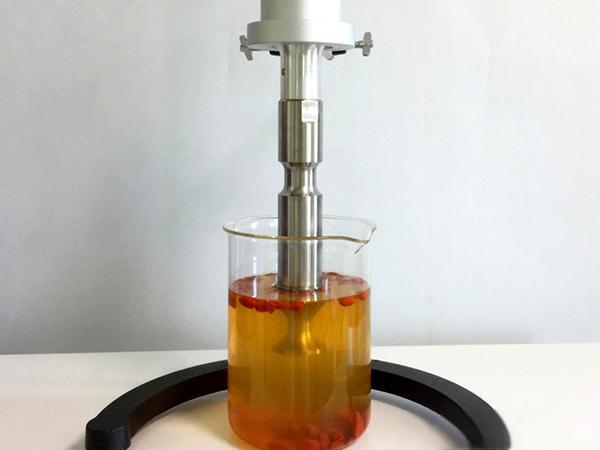
Gui Hai Shui et al. [16] used an ultrasound-assisted extraction method to extract the flavonoid components from Tribulus terrestris. The ratio of dry Tribulus terrestris powder to 60% methanol was 1:60 (g/mL), and the extraction was performed once with an ultrasound time of 30 min. the contents of isorhamnetin-3-O-β-D-rutinoside and isorhamnetin-3-O-β-D-gentiobioside were measured to be 15.59 mg/g and 15.59 mg/g, respectively. The flavonoid components in Tribulus terrestris were extracted using an ultrasound-assisted method with methanol as the extraction solvent and liquid ratio 1:50 (g/mL), ultrasonic time 30 min, the content of Tribulus terrestris flavonoids was 15.59 mg/g. The ultrasonic-assisted extraction method not only has the advantages of short extraction time, convenient operation and low cost, but also can avoid the damage of effective components caused by heating.
2.3 Microwave-assisted extraction method
Zhang Jian et al. [17] used microwave-assisted response surface methodology to optimize the extraction process of total flavonoids from Tribulus terrestris: 70% ethanol, extraction temperature 70 °C, extraction time 20 min, material-to-liquid ratio 1:70 (g/mL), and extraction yield 0.69%. Yang Li et al. [18] designed an orthogonal test to optimize the microwave-assisted extraction process of Tribulus terrestris total flavonoids: 70% ethanol, extraction time 50 min, liquid-to-solid ratio 1:30 (g/mL), Tribulus terrestris total flavonoid yield 5.09%. Microwave-assisted extraction has the advantages of being easy to operate, short extraction time, uniform heating, and solvent saving, and is widely used in the extraction of active ingredients from natural products.
2. 4 Cellulase method
Shu Guowei et al. [19] used a cellulase method to extract tribulus terrestris flavonoids: the extraction solvent was water, the extraction temperature was 55 °C, pH 5.0, material to liquid ratio 1:15 (g/mL), enzyme dosage 3.5%, enzyme treatment time 2.5 h, extraction rate up to 0.2023%. The cellulase method has the advantages of short extraction time, high selectivity, and mild reaction conditions, and is therefore increasingly being valued.
3 Pharmacological activity of tribulus terrestris flavonoids
3. 1 Anti-inflammatory
Tribulus terrestris flavonoids have anti-inflammatory activity and can enhance the body's immunity. Tian et al. [20] determined the anti-inflammatory activity of tribulus terrestris flavonoids by measuring the degree of ear swelling in mice before and after applying different concentrations of tribulus terrestris flavonoids to the ears. When the rapid microbial test (RMM) reached 25 g/kg, Tribulus terrestris flavonoids have an anti-inflammatory effect similar to aspirin. Abbas et al. [21] tested the inhibitory effect of tribulus terrestris flavonoids extracted with different solvents on hemolysis of human venous blood cells. When the solvent was methanol, 400 μg/mL flavonoids could effectively inhibit 68.5% of human blood albumin denaturation and egg albumin denaturation, and exhibited good anti-inflammatory activity. Sudheendran et al. [22] used a carrageenan-induced rat paw edema model to investigate the inhibitory effects of Tribulus terrestris root and fruit on the edema of albino rats' left hind paws. The root had an inhibitory rate of 64.2%, and the fruit had an inhibitory rate of 28.57%.
3. 2 Antibacterial
Tribulus terrestris flavonoids have antibacterial and bactericidal effects. Tian et al. [23] used the microplate dilution method to determine the antibacterial activity of Tribulus terrestris, where flavonoids showed good antibacterial activity against both gram-negative and gram-positive bacteria, with MIC values of 0.07-0.15 mg/mL. Lubna et al. [24] found that Tribulus terrestris flavonoids have a strong antibacterial effect, which is due to the fact that tribulus flavonoids can form complexes with extracellular soluble proteins and bacterial cell walls to inhibit and kill bacteria. Gomathi et al. [25] measured that tribulus terrestris water and ethanol extracts contain alkaloids, tannins, flavonoids, quinines and phenolic compounds, which can inhibit the growth of selected bacteria and fungi. The water extract had stronger antibacterial activity than the ethanol extract.
3. 3 Antioxidant
Tribulus terrestris flavonoids are natural antioxidants with has a unique structure and mechanism of action. Tian et al. [20] used 10.47 μg/mL of the half-inhibitory concentration of 2,2⁃diphenyl⁃1⁃picrylhydrazyl (DPPH) and 7.99 μg/mL of the half-inhibitory concentration of benzoic acid to determine the antioxidant activity of tribulus terrestris extract using the 2,2⁃azino⁃bis⁃3⁃ethylbenzothiazoline (ABTS) reagent. Tribulus terrestris extract flavone exhibited good antioxidant activity. Hifnaw et al. [26] used the DPPH method to measure the antioxidant activity of tribulus flavone and phenolic acids extracted in different solvents. Among them, the flavonoids extracted with ethanol, n-butanol and ethyl acetate had very good free radical scavenging ability, with half-inhibitory concentrations of (0.064 ± 0.002), (0.240 ± 0.056), and (0.280 ± 0.004) mg/mL, respectively. They can be used as scavengers for various oxidants (superoxide anions, hydroxyl radicals, peroxyl radicals, etc.), and also as a quencher of singlet oxygen. Kancheva et al. [27] used the rapid DPPH radical method to evaluate the effectiveness of flavonoids in scavenging free radicals, and quercetin had the highest free radical scavenging activity.
3. 4 Protecting the cardiovascular system
Tribulus terrestris flavonoids exhibit good pharmacological activity in protecting the cardiovascular system. Turing [28] tested the mice's ability to tolerate hypoxia at normal pressure, and recorded the time it took for the mice to die from hypoxia in a dry, confined space by injecting them with different doses of tribulus flavonoids. Compared with the blank control group, a certain dose-dependent relationship was observed. Qi et al. [29] observed that after taking Eucommia ulmoides-Tribulus terrestris for 6 weeks, the systolic and diastolic blood pressures in the Eucommia ulmoides-Tribulus terrestris group were significantly lower than those in the blank group (P<0.05). El⁃Shaibany A et al. [30] measured the fasting blood glucose of rabbits before and after taking 5 mg/kg glyburide and 250 mg/kg Tribulus terrestris flavonoids to investigate the anti-hyperglycemic activity of Tribulus terrestris flavonoids. Compared to the blank group, the glibenclamide group and tribulus terrestris flavonoid group significantly reduced blood glucose. A single dose of tribulus terrestris flavonoid reduced the fasting blood glucose of rabbits to a level comparable to the glibenclamide group, and returned to the initial level (0 h) within 2 h, showing a good hypoglycemic effect.
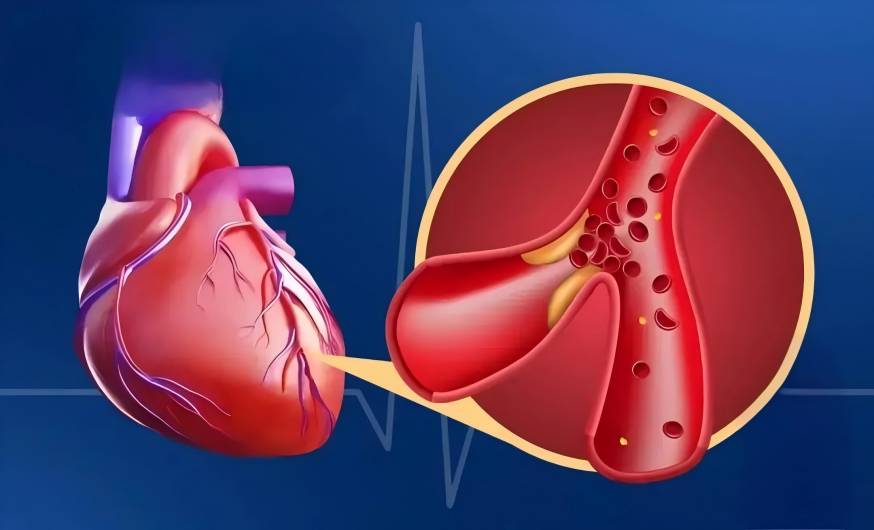
3. 5 Protecting the nervous center
Neurodegenerative diseases are characterized by the massive loss of specific neurons, which can lead to short-term memory loss and cognitive impairment [31]. Chauhdary et al. [32] used an aluminum chloride-induced Alzheimer's disease rat model to conduct a study. The rats were orally administered 100, 300, or 1,000 mg/kg of tribulus terrestris flavonoids for for 21 days, the rats' exploratory behavior and head tilting behavior were significantly improved (P<0.001). In terms of biochemical parameters, compared with the control group, the acetylcholinesterase activity in the tribulus terrestris flavonoid treatment group was significantly restored, showing a good neuroprotective effect.
4 Prospects
At present, there have been a large number of research results on the determination of the content of tribulus terrestris flavonoids, extraction methods, separation and purification, and activity testing. However, they have not yet been applied on a large scale in clinical treatment and the further processing of products. With the improvement of living standards, people's health awareness is becoming stronger and stronger, and tribulus terrestris flavonoids have broad application prospects in the fields of food, medicine, fine chemicals, etc.
Reference:
[1] SEMERDJIEVA I B , ZHELJAZKOV V D.Chemical constitu⁃ ents , biological properties , and uses of Tribulus terrestris : a review[ J] . Natural product communications , 2019 , 14 ( 8) :1934578 , 1986839.
[2] National Pharmacopoeia Commission. Pharmacopoeia of the People's Republic of China: Part I [M]. Beijing: China Medical Science and Technology Press, 2020: 352.
[3] XU D D , WANG Y , GUO W J , et al. LC⁃MS⁃based multiomics analysis of brain tissue for the evaluation of the anti⁃ ischemic stroke potential of Tribulus terrestris L.fruit extract in MCAO rats [ J ] . Arabian journal of chemistry , 2022 , 15 (11) : 104297.
[4] ABDULQAWI L N A , QUADRI S A.Evaluation of antibacterial and antioxidant activities of Tribulus terrestris L. fruits [ J] .Research journal of pharmacy and technology , 2021 , 14(1) : 331-336.
[5] Shi Q, Yu B, Xu L, et al. Determination of the content of three hydrolyzed flavonoid aglycones in Tribulus terrestris by reversed-phase high performance liquid chromatography [J]. Journal of Pharmaceutical Analysis, 1999(2): 75⁃78.
[6] Xie S, Li R. Comparison of the composition of Tribulus flavonoids from different origins [J]. Chinese Pharmacist, 2015(10): 1671 ⁃ 1673.
[7] Li Chunna, Fan Bingduo, Shi Xiaojuan, et al. Determination of the content of three acid hydrolyzed flavonoid glycosides in Tribulus terrestris stems and leaves by HPLC-DAD [J]. Chinese Medicine Herald, 2015 (1): 33-36.
[8] Li Suying, Zhang Mingliang. Simultaneous determination of 10 ingredients in Buyi Zhiwei Wan by HPLC-QAMS [J]. Journal of Shenyang Pharmaceutical University, 2021 (12): 1286-1295.
[9] Xiao Tianmei, Jin Lijie. Determination of total flavonoid content in Tribulus terrestris by spectrophotometry [J]. Journal of Inner Mongolia University for the Nationalities (Natural Science Edition), 2015(6): 518-521.
[10] Shu Guowei, Chen He, He Xuexian, et al. Optimization of extraction conditions for total flavonoids from Tribulus terrestris [J]. Food Industry Science and Technology, 2009(9) : 186⁃ 187 , 190.
[11] Zhao Ming, Zhu Sanpu, Yang Chao, et al. Study on the extraction process of Tribulus terrestris total flavonoids [J]. Shizhen Traditional Chinese Medicine, 2010(7) : 1728⁃ 1729.
[12] Li Junling, Wang Dawei. Optimization of the extraction process of Tribulus terrestris total flavonoids by orthogonal design [J]. Sichuan Traditional Chinese Medicine, 2008(12): 63⁃64.
[13] Sun Yoran, Guo Nana, Yuan Xubao, et al. Optimization of the reflux extraction process of Tribulus terrestris total flavonoids by orthogonal design [J]. Industrial Technology Innovation, 2014 (4): 428⁃431.
[14] Xiao Tianmei, Chen Yuhua, Cheng Zhe. Study on the extraction process of flavonoids from Tribulus terrestris [J]. Journal of Inner Mongolia University for the Nationalities (Natural Science Edition), 2019 (6): 517⁃520.
[15] Yang Xuemiao, Xu Nanbing, Yang Dan, et al. Application of ultrasonic-assisted natural eutectic solvent extraction in the extraction of flavonoids from Tribulus terrestris L. [J]. Modern Chemical Industry, 2022(S2): 239⁃243.
[16] Gui H S, Liu T H, Qin L L, et al. Simultaneous determination of three flavonol glycosides in Tribulus terrestris stems and leaves by HPLC [J]. World Science and Technology⁃Modernization of Traditional Chinese Medicine, 2014(5): 1055⁃1059.
[17] Zhang J, Tan J C, Yang Y R, et al. Optimization of the extraction process of flavonoids and saponins from Tribulus terrestris by response surface methodology [J]. Chemical Technology, 2020(6): 6-12.
[18] Yang Li, Wang Chunyu, Han Mei, et al. Optimization of the extraction process of total flavonoids and total saponins from Tribulus terrestris [J]. Journal of Jilin Agricultural University, 2009(1) :45⁃ 50.
[19] Shu Guowei, Chen He, He Xuexian, et al. Study on the enzymatic extraction of tribulus flavone [J]. Food Science and Technology, 2009(8) : 127⁃ 130.
[20] TIAN C L, CHANG Y , ZHANG Z H , et al.Extraction technology, component analysis , antioxidant , antibacterial , analgesic and anti⁃inflammatory activities of flavonoids fraction from Tribulus terrestris L. leaves [ J ] . Heliyon , 2019 , 5(8) :e02234.
[21] ABBAS M W , HUSSAIN M , AKHTAR S , et al. Bioactive compounds , antioxidant , anti⁃inflammatory , anti⁃cancer, and toxicity assessment of Tribulus terrestris—In vitro and in vivo studies[ J] .Antioxidants ,2022 , 11(6) : 1160.
[22] SUDHEENDRAN A , SHAJAHAN M A. Anti⁃inflammatory activity of root and frutt of gokshura ( Tribulus terrestris linn. ) in albino rats [ J] . International journal of ayurveda and pharma research ,2017 ,5(7) : 1 ⁃ 4.
[23] TIAN C L, ZHANG Z H , WANG H , et al. Extraction technology, component analysis , and in vitro antioxidant and antibacterial activities of total flavonoids and fatty acids fromTribulus terrestris L. fruits[ J] . Biomedical chromatography ,
2019 , 33(4) :e4474.
[24] FATIMA L, SULTANA A , AHMED S , et al.Pharmacological activities of Tribulus terrestris linn : a systemic review[ J] . World journal of pharmacy and pharmaceutical sciences ,2015 ,4(2) : 136⁃ 150.
[25] GOMATHI S , SHANMUGAPRIYA A , BHARATHI V , et al. Antimicrobial activity and phytochemical studies of aqueous and ethanolic fruit extracts of Tribulus terrestris[ J] .IJPI'S journal of pharmacognosy and herbal formulations , 2012 , 2 (8) :47-51.
[26] HIFNAWY , ABOUZID S , ALI Z Y , et al. Phenolic contents and in vitro free radical scavenging activity of alcoholic extract of the fruits of Tribulus terrestris L[ J] .The pharma in⁃novation journal ,2015 ,4 :92⁃ 100.
[27] KANCHEVA V , NENADIS N ,TSIMIDOU M , et al.Antioxidative properties of Tribulus terrestris from Bulgaria and radical scavenging activity of its flavonoid components[ J] . La rivista italiana delle sostanze grasse ,2007 , 84 :210-219.
[28] Qu N. Study on the flavonoid active ingredients of Tribulus terrestris L. [D]. Shenyang: Liaoning University of Traditional Chinese Medicine, 2007: 21⁃25.
[29] QI Y Z , YANG X S ,JIANG Y H , et al.Study of the mechanism underlying the antihypertensive effects of Eucommia ulmoides and Tribulus terrestris based on an analysis of the intestinal microbiota and metabonomics [ J ] . BioMed research international ,2020(4) : 1 ⁃ 12.
[30] EL⁃SHAIBANY A , AL⁃HABORI M , AL⁃TAHAMI B , et al.Antihyperglycaemic activity of Tribulus terrestris L aerialpart extract in glucose⁃loaded normal rabbits [ J] . Tropical journal of pharmaceutical research ,2016 , 14(12) :2263.
[31] UDDIN M S , AL MAMUN A , HOSSAIN M S , et al.Exploring the effect of Phyllanthus emblica L. on cognitive performance , brain antioxidant markers and acetylcholinesterase activity in rats : promising natural gift for the mitigation of Alzheimer ’s disease [ J ] . Annals of neuro sciences ,2016 ,23(4) :218⁃ 229.
[32] CHAUHDARY Z , SALEEM U , AHMAD B , et al. Neuroprotective evaluation of Tribulus terrestris L.in aluminum chloride induced Alzheimer ’s disease [ J] . Pakistan journal of pharmaceutical sciences ,2019 , 32(2) : 805-816.


 English
English French
French Spanish
Spanish Russian
Russian Korean
Korean Japanese
Japanese